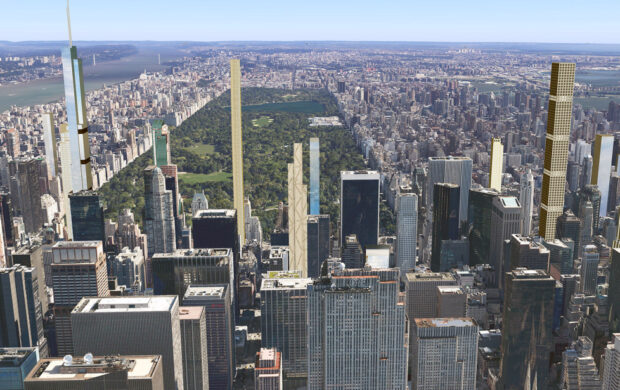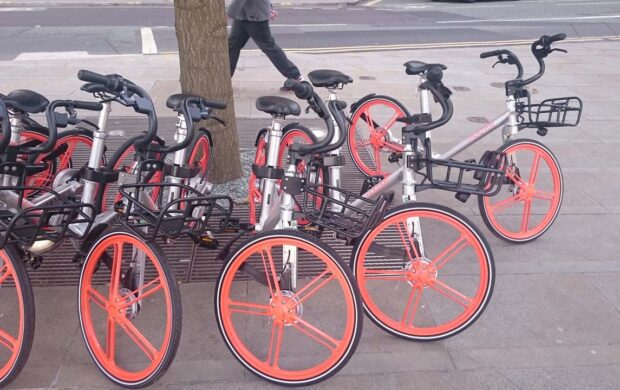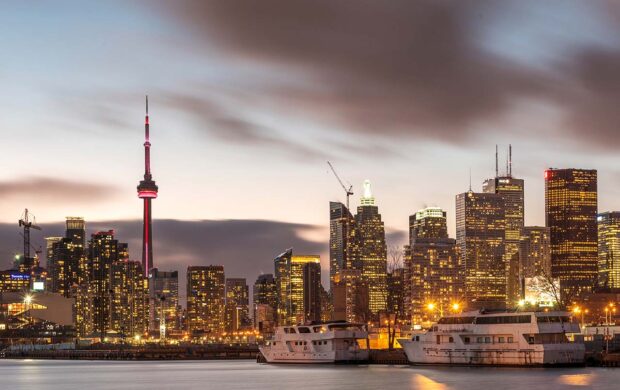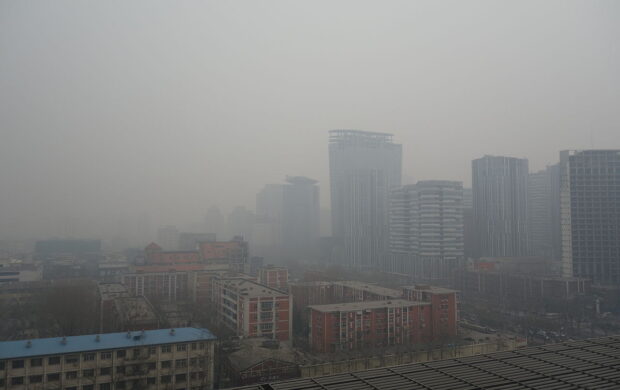Sound is such an important part of how we experience urban life. Professor Peter Madden asks how we can design our cities of the future to be more acoustically alluring.
I was out doing a Bristol Sound Walk recently, acoustically mapping a neighbourhood with the Hush City App. As I logged wind in the trees, playtime in a local school, the constant background drone of traffic, I found myself asking what will this city sound like in the future?

Sound in cities
Sound is such a fundamental component of our cities, of their vibrancy, of their urban identity, and of the health and wellbeing of their citizens. But it is too often disregarded. The architect Juhani Pallasma complained of the ‘Ocularcentrism’ of culture and design, how sight takes precedence over the other senses. For the UK Noise Association noise is the ‘forgotten pollutant…sidelined when decisions are being made by the public and private sectors.’
According to the World Health Organisation, noise is the second most important environmental health factor, after air pollution: ‘Excessive noise seriously harms human health and interferes with people’s daily activities…It can disturb sleep, cause cardiovascular and psychophysiological effects…Traffic noise alone is harmful to the health of almost every third person in Europe’.
Those that can afford to, live quietly.
There are distributional impacts, too, of noise pollution, which map to social exclusion. Those that can afford to, live quietly. The less well-off live near to noisy industry, next to busy roads, or packed in crowded dwellings with poor sound insulation.
Of course, sound can also contribute positively to the urban context. It can be part of the sense of place — the ringing of church bells, the hubbub of pavement cafes, the shouts of children playing out. Sound complements our other senses and helps to make sense of where we are; auditory cues, often barely noticed, help us navigate our towns and cities.
So, how will cities sound in the future? As we urbanise and densify, can we create sonic landscapes that work for all our citizens?
Science and Data
We’ll certainly understand urban sound better. Smart cities, 5G, and citizen science allow much closer mapping of the negative physical and mental health impacts as well as differential social impacts. Colleagues at NYU’s Center for Urban Science & Progress have deployed microphones in 60 spots around the city to understand the noise-scape. So far, the sensors have collected more than 150 million recordings, understanding the pattern, type, and intensity of noise, which city officials can then use to reduce pollution. Apps and wearables will generate yet more data that can be layered with health and wellbeing data to understand correlation and causation.
Changing Mobility
Given how much noise is due to traffic, changing urban mobility — particularly the wholesale move to electric vehicles — offers huge possibilities. Traffic noise is particularly intrusive: combustion engine noise covers so much of the spectrum, generating noise that can go round corners.
Unfortunately, electric vehicles now need have to be noisy for safety reasons. The charity Guide Dogs commissioned research in 2013 that suggested ‘Quiet hybrid and electric vehicles are 40% more likely to collide with pedestrians than cars with a regular combustion engine’. These safety concerns led to EU lawsmaking acoustic vehicle alerting systems mandatory. Car makers have used the opportunity to think about the character of their car and brand in deciding what noises to generate.
Planning more mixed-use neighbourhoods and enabling more flexible working could have big noise benefits.
Cities will get bigger wins by reducing the need to drive. Noise dropped by 50% during the pandemic. Planning more mixed-use neighbourhoods and enabling more flexible working could have big noise benefits. Taking space away from cars and giving it to pedestrians, cyclists or green spaces, and building trams and light rail, could make our cities sound much better.
As we conquer terrestrial noise, we’ll face new airborne challenges. Delivery drones are slated to fill our skies; and there’s big investment in airborne personal mobility services. The fact that these have vertical take-offs, fly at much lower levels over communities, and have an annoying high-pitched tone, will — unless there is better design and regulation — add to the urban cacophony.
Electrifying Everything
A massive change over coming years will be the electrification of everything — generators, waste-collection, heating, cooling, as well as transport — and there is an opportunity to make sound an integral part of design.
A new air-con unit is bought every 4 seconds in India
Heat pumps are becoming mandatory in the UK and air-source pumps in particular are causing arguments, with residents worried about the number, volume, pitch and proximity. Similar challenges will be faced by cooling systems, as our cities heat up due to climate change and the urban heat island effect. Air-con use is set to explode across the world; a new air-con unit is bought every 4 seconds in India. Added to this, the increased investment in mechanical ventilation in the wake of the Covid pandemic means there’ll be a lot more engines and pumps whining away in our cities.
This gives an opportunity for more thoughtful design. Just as electric car manufacturers are asking what acoustic personality they want their vehicles to have, we can ask the same questions about our buildings. Joshua Taylor, a researcher at Bristol Interaction Group tells me ‘We may be able to vary or control the running speed of static equipment, to create more pleasant sound-scapes or to stop unpleasant sounds from travelling as far. We often have more control over frequency and timbre than decibels and loudness. For example — the constant pitch drone of ventilation or AC might feel penetrating but could be tuned or slowly varied so people find it more comfortable.’
Augmented Auditory Reality
We’ll certainly be using technology to shape our auditory landscape Not just wearables but ‘hearables’. Personal technology, not to block, but to interact with and to tune the world around them.
This could help blind and partially sighted people navigate the environment, as in the Cities Unlocked project I worked on with Microsoft and Guide Dogs. And more and more people are wearing wireless earbuds to listen to music or block the sounds around them, and these will increasingly tune the urban environment.
Sound can be changed in real time, adding reverberation, or tweaking decay, strength, clarity and warmth.
This blocking and tuning is happening inside buildings, too. So called ‘pink noise’ provides background static to many new office spaces. And taking this a step further, Bloomberg’s European headquarters in London, which I visited shortly after the opening, uses an electroacoustic system to capture the sound, digitally remodel it, then send broadcast the acoustically-improved edit back out. Because this is all done digitally, sound can be changed in real time, adding reverberation, or tweaking decay, strength, clarity and warmth.
This acoustic tweaking might move out of the building into the urban neighbourhood, recording, modulating, and amplifying the sound of the city.
Urban Design
The physical design of the city can help make it sound better. Sonic barriers and defensive acoustics have already been deployed along thousands of miles of highways, mitigating some of the thoughtless road design of the past Century. These do block sound, but they are ugly and can further isolate communities.
A sound wave at the right frequency and wavelength, will counteract the sound waves of an unwanted noise.
Buildings themselves act as barriers, and we’re likely to see more active noise cancellation by buildings. Augmenting existing structures with vibrating façades, for instance, could potentially cancel out noise by exploiting the physics of interference. (A sound wave at the right frequency and wavelength, will counteract the sound waves of an unwanted noise). New technologies and new types of materials will help: frequencies of unwanted sounds could be separated and selectively muted by material layers. And road surfaces too, where porous asphalt already reduces tire noise, could be further improved,
Greener cities with more tree cover and more high quality green space will absorb more noise pollution and potentially generate more of the sounds we want to hear: wind in the trees and birds on the branches. Sarah Jane Morris, a landscape architect who leads the Bristol Sound Walks, advocates ‘proactively planting different species for the acoustic quality you want’.
Orchestrating the Future City
With these big urban changes — the electrification of energy, the digitisation of life, the densification and regeneration of cities — we have choices about the acoustic landscape we create. What sounds do we want to keep that are part of place-making? What should be the mixture of real and artificial sounds? Who gets to decide this sonic future?
Who gets to decide this sonic future?
Sound in cities is very contested. One person’s banging tunes are another person’s noisy neighbours. Incoming gentrifiers complain about long-established music venues. Young people want the right to party. And because we have a very culturally-determined response to sound, conflict can arise when different attitudes rub up against each other, with ethnic minority groups disproportionately penalised for the noise they make.
Will the cacophony of sounds that assault our cities be better regulated? A recent report on the sounds of the London Underground found that on average there was an announcement on the trains every 42 seconds and that some of the platform announcements reached 98 decibels — louder than a plane landing at Heathrow.
If Transport for London can’t curate sound for a single system under their control, what chance do we have for the planning the city soundscape?
Architects and planners design for beautiful-looking cities; they sometimes design for quiet; but what about creating lovely sounding places? In The Soundscape, Our Sonic Environment and the Tuning of the World, Murray Schafer suggests we see the ‘soundscape of the world as a huge musical composition, unfolding around us ceaselessly… [people] are simultaneously its audience, its performers and its composers.’ We now have the knowledge, the technology, and the opportunity to orchestrate the soundscapes in our cities to acoustically delight all of our citizens.










Join discussion